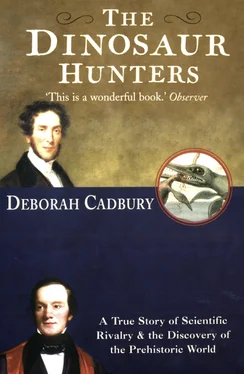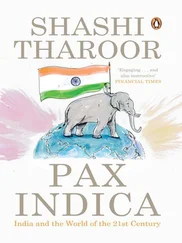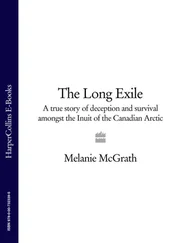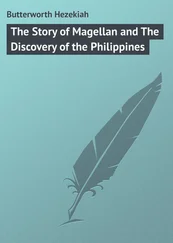1 ...7 8 9 11 12 13 ...22 At the age of twenty-one he gained his diploma of membership of the Royal College of Surgeons and returned to Lewes, where he was immediately offered a partnership with his former master, James Moore. It was soon apparent that he faced a gruelling workload as a country doctor. Epidemics of cholera, typhoid and smallpox still raged. ‘An immense number of Persons in this Town and neighbourhood are ill with Typhus Fever,’ he recorded in his diary on one occasion. ‘I have visited upwards of 40 or 50 patients every day for some time: yesterday I visited 64. The small pox is also very prevalent, 14 have died with it, Taylor in Malling Street who had it in 1794 is now covered with various pustules and has been very ill.’ Armed with little more than boxes of leeches, which were sent from London in boxes of two hundred, he struggled on against these deadly diseases.
His practice included attendance on the sick poor of three parishes, for which he was paid £20 a year, and treating the inmates of the Poor House at St John’s, near Lewes. Long before the development of emergency services, the local doctor provided the only care, even for the severely injured: ‘This morning I was summoned to Ringmer, a poor woman on the Green, Mrs Tasker, had set fire to her clothes and was most dreadfully burnt, it is scarcely possible she should survive.’ For five weeks he visited for an hour every day to change her dressings. When she died, he noted, ‘I am almost fatigued to death.’
There were numerous mills in the district for grinding corn, for producing rapeseed oil and flour, and for brewing or malting, and even for producing paper. With child labour, accidents were common and, without anaesthetic, invariably traumatic: ‘I was called to a most distressing accident at Chailey Mill. A poor boy got his clothes entangled by an upright post that was rapidly revolving; the lad in consequence was whirled round with great velocity and his legs were dashed against a beam. It was considered absolutely necessary to amputate the left leg above the knee, but the constitutional shock was so great that the poor boy died the next day.’
The hours of Gideon Mantell’s medical practice were long and unpredictable, especially since he excelled at midwifery, delivering between two and three hundred babies a year. At a time when the average mortality for women in some hospitals was as high as one in thirty, Mantell had only two deaths in over two thousand births during fifteen years. His great success came at a price: ‘frequently I have been up for six or seven nights in succession: an occasional hour’s sleep in my clothes being the only repose I could obtain’. Nonetheless, with his conscientiousness and tireless energy he gradually increased the profits on the practice from £250 a year to £750.
Despite the immense pressures of his medical workload, Mantell was prepared to sacrifice his few leisure hours to make headway in geology as well. With the carelessness of youth he spared himself nothing, often studying until the small hours and rising after just four hours’ sleep, to see his patients before embarking on some geological expedition.
There were numerous local pits and quarries such as Jenner’s quarry, Malling Hill Pit, Malling Street Pit, Southerham Pit, each laying bare the strata of Sussex. Following the approach of William Smith, he aimed to construct a geological chart of the correct sequence of the local rocks. He paid the pit labourers for any interesting fossils that he could add to his cabinet, and soon became familiar with the beautiful creatures of this former sea. To help identify the invertebrates, Mantell wrote to James Sowerby, a naturalist who was compiling a catalogue of fossil shells. There were many different species of ammonite, the extinct mollusc with a spiral shell that had so enchanted him as a child. In gratitude for the perfect specimens Mantell sent, Sowerby named one species after him: Ammonites mantelli. Embedded with the ammonites in the chalk were bivalves, sponges and another extinct mollusc, the belemnites, with their characteristic conical shell divided into chambers.
As Mantell gained in confidence, he established a network of correspondence with those of similar interest, such as the indefatigable Etheldred Benett – a woman of formidable intellect and serious endeavour, not one to swoon with delight at fashion’s latest dictates or, indeed, to follow them. Although from a prosperous family in Wiltshire, Miss Benett did not succumb to the usual conventions of a woman in county society. Rather than settling into marriage in some comfortable country rectory she stayed firmly unattached, and her pony carriage would often be seen on the hills of Wiltshire while she pursued her main interest, geology. She devoted her life to her collection, and became so well known that eventually her name alone in the literature would suffice to denote work of outstanding quality.
For Mantell such correspondence was both prestigious – she was, after all, a member of the gentry – and highly beneficial, since he could extend his knowledge beyond Sussex. He wrote to her in 1814, requesting ‘the honour of a correspondence’. Miss Benett graciously replied by sending a hamper of fossils to the wagon office in Lewes. Soon they were immersed in comparing the strata of Wiltshire and Sussex, trying to decide which rocks lay above and below others in the sequence. Although not yet known as such they were trying to unravel the sequence of ‘Cretaceous’ rocks across Southern England, which had been formed between 144 and 66 million years ago. Mantell was aided in this by another member of the gentry, George Greenough, who was busily engaged in developing his geological map of England with William Buckland. Greenough was only too keen to capitalise on Mantell’s enthusiasm, frequently requesting more detailed information on the Sussex rocks. By 1815, Mantell had already identified several different strata within the chalk formation around Lewes, the lowest being blue marl, then chalk marl, lower chalk and upper chalk. Greenough steered his research and provided advice on naming the rocks.
In the course of his medical duties, Gideon Mantell was summoned to the assistance of a Mr George Woodhouse, a prosperous gentleman who owned a linen-draper’s business in London. While giving ‘unremitting professional attention’ to Mr Woodhouse, Mantell could hardly fail to notice his patient’s eldest daughter Mary. Her portrait shows a young woman with a mass of dark curls piled high, and large, regarding eyes, her face set off by a fashionably off-the-shoulder dress. She shared his interest in fossils and gave him gifts – corals from Worcestershire and other curiosities she had found. They soon ‘formed an attachment’ and, it would appear, could not wait to get married.
The bride was only twenty, a minor in the eyes of the law, when she married in May 1816, by special licence and with the consent of her mother as guardian. Unfortunately, her father did not live to see the wedding. Thanking Mantell for his ‘professional exertions and kind attention’ shortly before he died, Mr Woodhouse presented him with a treasured gift of James Parkinson’s survey of the fossil kingdom.
Once settled in Lewes, Mary Mantell dutifully helped her husband with the painstaking task of searching for fossils, which was rapidly becoming his consuming interest. It was not uncommon for her to ride out with him on geological expeditions and sometimes even on his medical rounds, when she would check the ground for fossils while he visited patients. She soon found she could assist him with drawings of his finds, and patiently tried to master the art of scientific illustration. ‘I am much pleased with her [Mary’s] first attempt at etching,’ wrote Etheldred Benett to Mantell in 1817. ‘A little practice to enable her to work stronger and bolder appears to me all that is wanting to make them a great ornament to your work.’
Читать дальше












